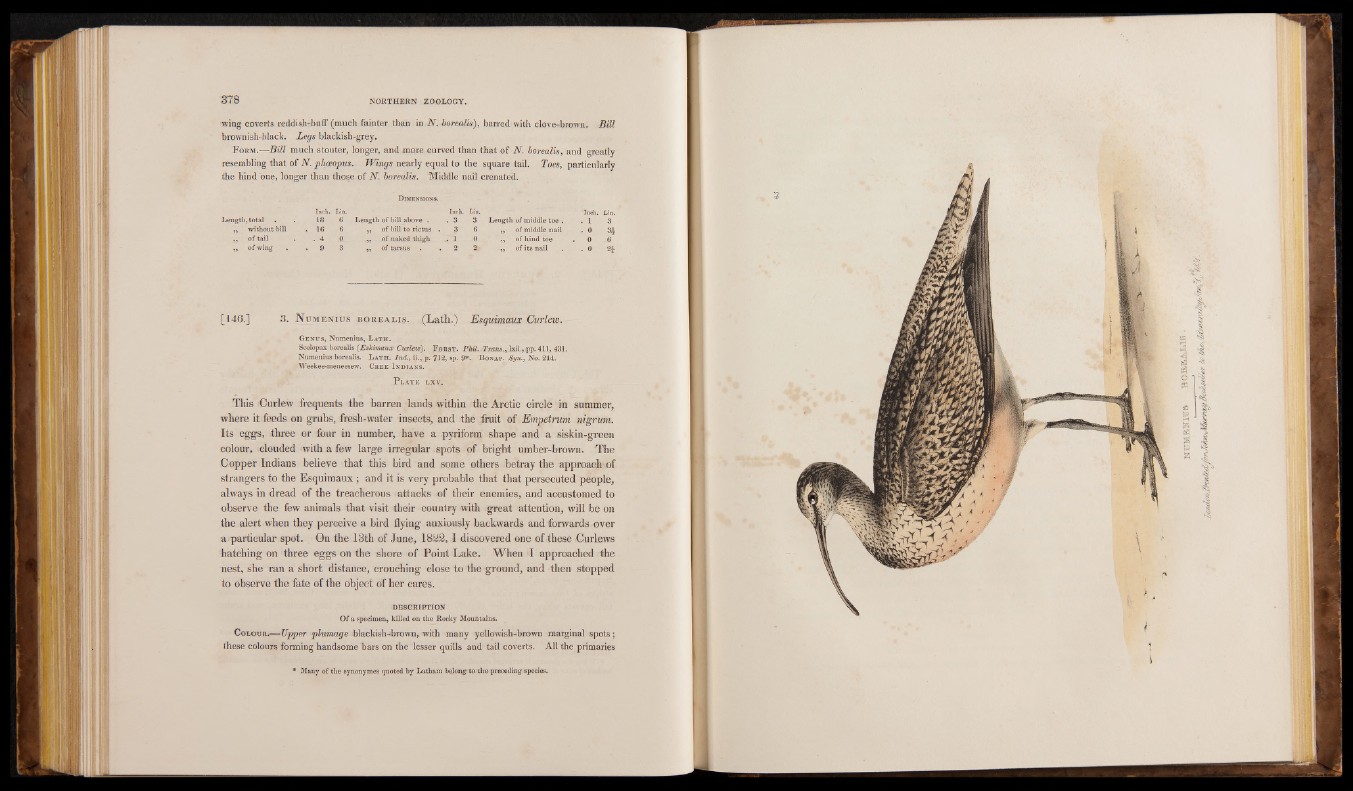
NORTHERN ZOOLOGY.
wing coverts reddish-buff (much fainter than in N. borealis)., barred with clove-brown. Bill
brownish-black. Legs blackish-grey.
F orm.—Bill much stouter, longer, and .more curved than that of N. borealis, and greatly
resembling that of N. phoeopus. Wings nearly equal to the square tail. Toes, particularly
the hind one, longer than those of N. borealis. Middle nail crenated.
Dimensions.
Length, total 18
Lin.
6 Length of bill above .
I»ch. Lin.
3 Length of middle toe . . 1
Lin.
„ without bill 3 . 16 6 „ of bill to rictus . 3 6 ,, of middle nail . 0 3& ,, of tail . 4 0 _,, .of naked thigh , 1 0 ,, of hind toe 0 6
,, of wing . 9 3 „ of tarsus 2 2r ,, of its nail . 0 2-1.
[146.] 3. N u m e n i u s b o r e a l i s . (Lath.),'. Esquimaux Curlew.-
Ge n u s , Numenius, L a t h .
Scolopax borealis (Eskimaux Curlew). F.obst. Phil.Trans., lxii.,,pp. 411, 431.
Numenius-borealis. Lath. Ind., ii.,_p. 712, sp. 9*. Bonap. Syn., No. 244.
Weekee-meneesew. Cb.e e I n d ia n s .
P late lxv.
This Curlew frequents the barren lands within the Arctic circle in summer,
where it feeds on grubs, fresh-water insects, and the fruit of Empetrum nigrum. Its eggs, three or four in number, have a pyriform shape and a siskin-green
colour, clouded with a few large irregular spots of bright umber-brown. The
Copper Indians believe that this bird and some others betray the approach of
strangers to the Esquimaux; and it is very probable that that persecuted people,
always in dread of the treacherous attacks of their enemies, and accustomed to
observe the few animals that visit their country with great attention, will be on
the alert when they perceive a bird flying anxiously backwards and forwards, over
a particular spot. On the 13th of June, 1822, I discovered one of these Curlews
hatching on three eggs on the shore of Point Lake. When I approached the
nest, she ran a short distance, crouching close to the ground, and then stopped
to observe the fate of the object of her cares.
DESCRIPTION
Of a specimen, killed on the Rocky Mountains.
C olour.— Upper plumage blackish-brown, with many yellowish-brown marginal spots;
these colours forming handsome bars on the lesser quills and tail coverts. All the primaries
* Many of the synonymes quoted by Latham belong to 4he preceding species.